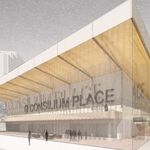It's funny, because previous just quick glance studies have said 100% yes, we should be building HSR. An in-depth study would be so overwhelming that it may actually get built!
Passenger rail in Southern Ontario could go phenomenally well. We have more than enough density to support it, nearing that of France and the Balkans, and surpassing Scotland, Spain, and southern Scandinavia, where rail travel's gone phenomenally well. The Quebec-Windsor corridor could easily be built similarly to places in Europe or Asia, with trains crisscrossing all over the place, but it's never going to happen if we say it won't work. Already, the corridor's ready for HSR, and the millions of new people that'll be coming in the coming decades won't hurt those odds, especially if we build our cities, towns, and countryside in a smart way. Forget the naysayers and prove them wrong.
I'm kind of curious, is the current study (they're currently doing a study, right?) looking to be the holy grail in-depth explorative study, or just a political bone to throw?




